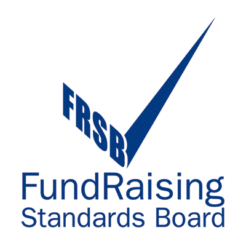The Fundraising Standards Board has recently announced a new phase of development in its strategy to secure public trust and confidence in charity fundraising. With a range of objectives looking both inward and outward, many members are being asked to stump up more cash. Some of the top ten names from PF’s Most Influential People in Fundraising are happy to voice their unequivocal support, but are will we get value for money?
Fundraising needs to be regulated. Individual not-for-profits may work together to campaign more effectively, but in fundraising we are reticent to look at the impact of our actions and annoyingly coy when it comes to justifying them. There are examples of regulation in the charity sector, most notably the Public Fundraising Regulatory Association (PFRA).
But what is regulation? In this online age I turned to Wikipedia: “Regulation mandated by a state attempts to produce outcomes which might not otherwise occur, produce or prevent outcomes in different places to what might otherwise occur, or produce or prevent outcomes in different timescales than would otherwise occur.” So an empowered body uses its influence to affect a positive change.
How does this sit with the initial FRSB remit? “A world first, we handle public complaints about how our members’ raise money as well as offering the public a ‘mark of reassurance’ to look for when giving to charities in the future.” Both a passive use of influence in my eyes. The kite mark is an established mark of regulation and complaints procedures are standard in most sectors.
Does the new phase take a more proactive direction? Engagement and support of members features highly, a continued push for members to push the brand further and lastly promotion of good fundraising practice. This lack of emphasis on explaining fundraising to the public irks me.
No complaint received has been upheld by the FRSB even though thousands have been received. This could point towards to a difference of opinion between what the public perceive as bad fundraising and the codes we obey. So who is going to educate them? Or, should we change the way fundraise to keep the public happy? Mencap would struggle to raise the funds we need if we could only rely on volunteers.
So how much is this second phase going to cost? I’ve seen no exact figures but the FRSB has given an indication to larger members of the increased cost; “the new fee represents the equivalent of just 1/200th of 1p of the donor £1”. Based on the guidance given by the Office of the Third Sector on enhanced disclosure statements, this would fail miserably!
I will be frank. I’m not convinced that we even understand what regulation could or should look like in the fundraising sector as a whole. I would like to see more joint charity publicity of why fundraising is important. The PFRA and Remember a Charity are pushing this message, its now time for us charities to justify our actions. This I think would be a positive, proactive way to ensuring long term sustainability in the fundraising sector









